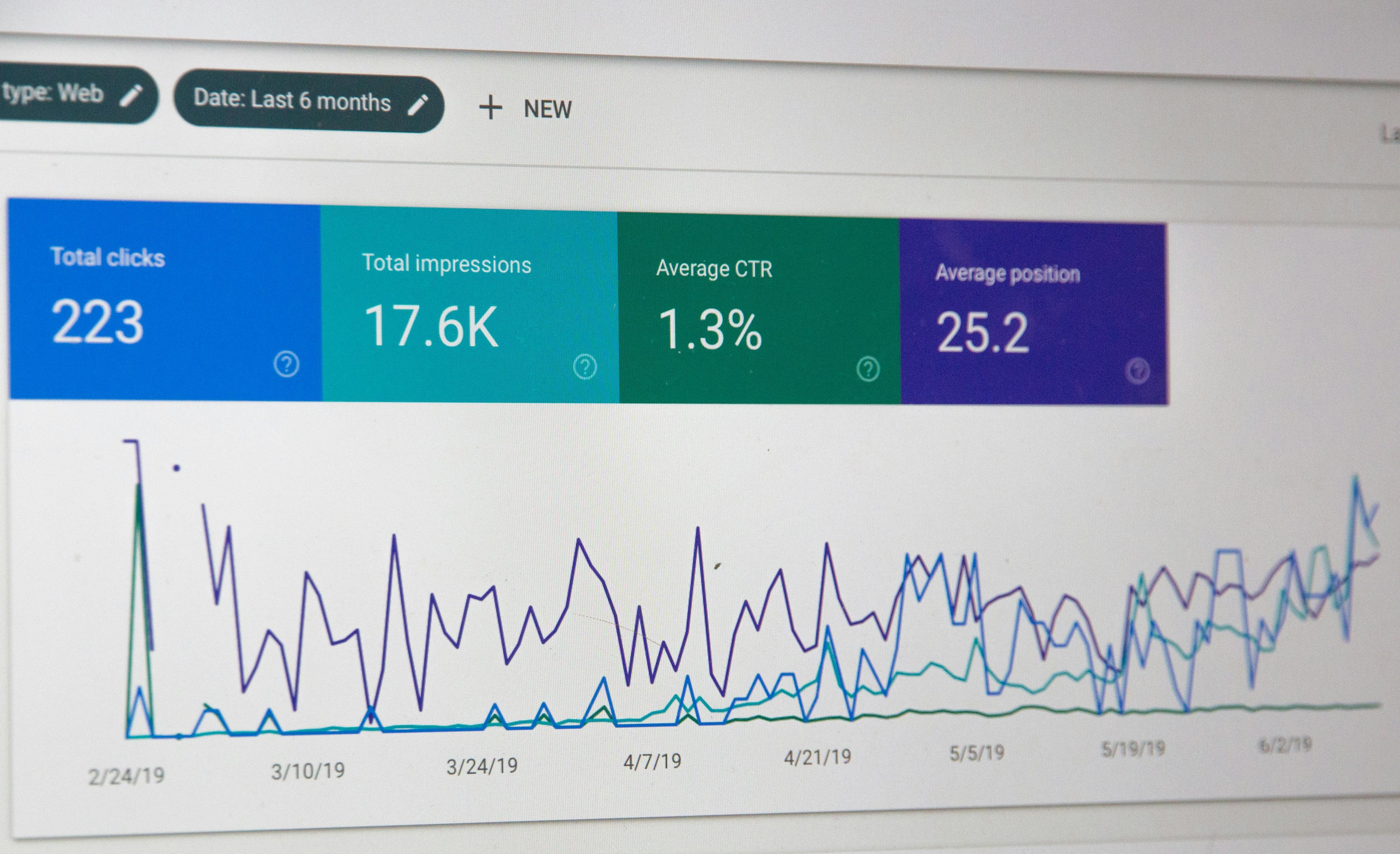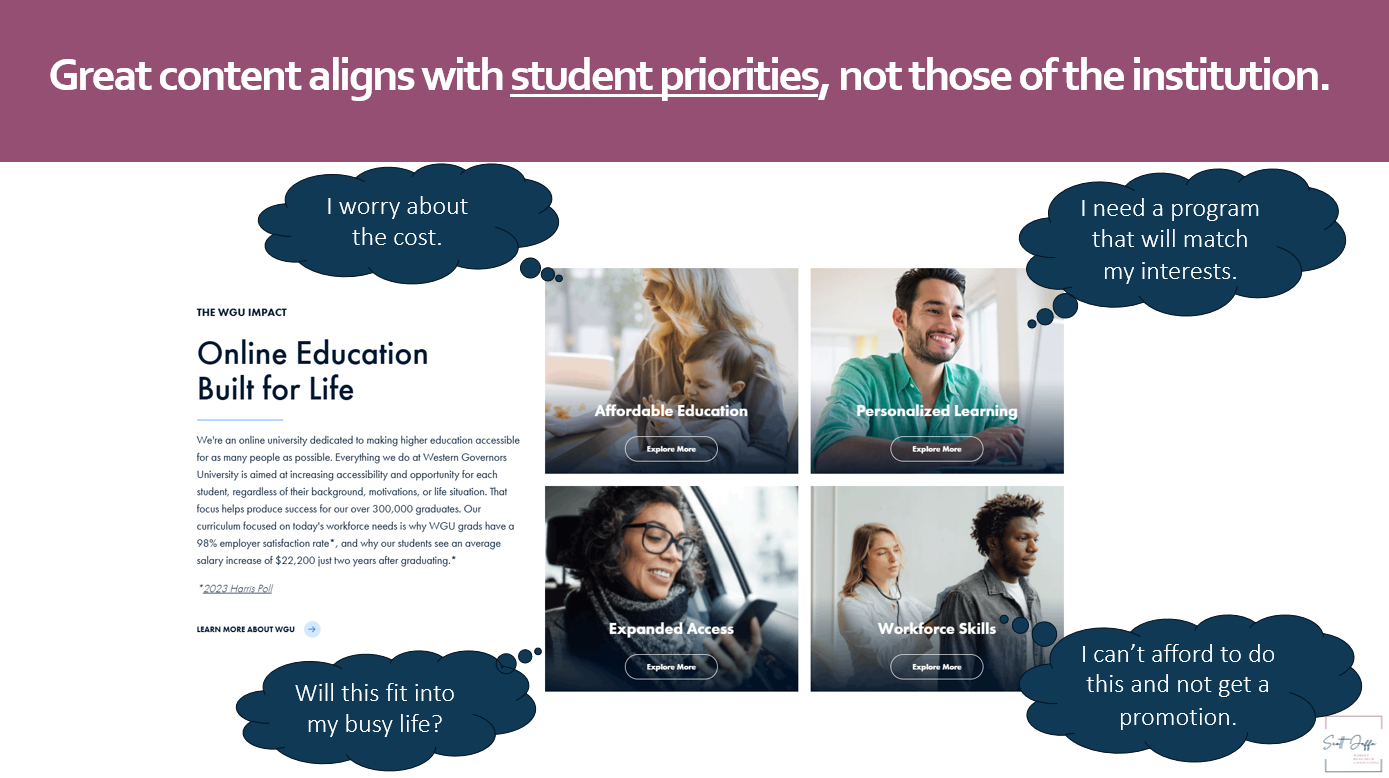
What It Takes to Create Great Digital Marketing Content
When I recently sat down with my former RNL colleague Adam Bormann, a longtime digital marketing content strategist, our conversation quickly turned to the same challenge that keeps so many higher ed marketers awake at night: how to make your institution’s programs truly stand out in a sea of sameness.
“Ads are everywhere,” Adam said. “They’re on social media, banner ads, search results — we’re inundated. The best content cuts through the noise because it feels authentic and speaks directly to what the audience wants.”
That word — authenticity — came up again and again. And as Gen Z becomes the dominant graduate and online audience, authenticity has shifted from a “nice to have” to a core expectation. “You can’t sound or look like everyone else,” Adam added. “If it seems too much like an ad, it’s just noise.”
He’s right. Today’s prospective students scroll past dozens of sponsored posts and emails – and plenty that are “personalized” before breakfast. They can spot manufactured marketing a mile away — and they’ll tune it out instantly.
Leading with What Matters Most
In my market research, I’ve seen time and again that prospective students consistently rank practical issues — affordability, flexibility, and time-to-degree — above vague claims of “quality.” As I told Adam, “Programs leading with those tangible benefits are the ones growing. For all but a small number of the most prestigious institutions, the ones that focus primarily on ‘quality’ are lagging behind.”
Too often, institutions cling to messaging that sells the industry rather than the institution. “Small class sizes” or “high quality faculty” or “personalized attention” are so universal that they’ve lost all meaning. As I reminded Adam, “When I’ve asked institutions to review their own value propositions (appearing on their web pages), they often don’t recognize their own web copy because it’s so generic.”

Breaking the Visual Mold
Adam shared a great example from his time marketing a data science program. “So much higher ed creative looks the same — a smiling student, maybe a campus building, maybe a stock photo in a blazer,” he said. “When we promoted a data-science program, we flipped that script. We used infographic-style visuals — icons, charts, median salary data, cost per credit, time to completion. These were data people. They wanted information that cut straight to the point.”
That approach not only resonated with the audience but also demonstrated something bigger: good creative is strategic, not decorative. It should be designed to reflect how your audience thinks and decides.
The Often-Ignored Factor: Speed
But even the most authentic, well-targeted message can fall flat if the institution isn’t acting with urgency.
The best content and strategy can still be undermined if the institution isn’t recognizing the importance of speed of response — not only to the initial inquiry but to every subsequent communication.
“In higher ed, you only get one shot,” Adam said. “If I inquire and one school gets back to me quickly, that’s probably who I’ll go with.”
He’s not exaggerating. In our RNL studies, roughly 80% of graduate and online students said they are likely or very likely to enroll in the program that responds or admits them first. The data is clear: even the most compelling creative can’t compete with a slow reply.
The Role — and Risk — of AI
We also talked about AI, which is transforming how content gets produced. Adam is pragmatic but cautious.
“If you lean on it too heavily,” he warned, “your content will sound just like everyone else’s.”
He uses AI as a jumpstart — to test copy structure or reframe messages — but never as the final draft. “Clients aren’t paying us to just put something into ChatGPT and hit ‘generate,’” he said. “They’re paying for expertise, nuance, and voice.”
I agreed. I once asked an AI tool to write a blog about graduate and online education, and it sounded exactly like me. No mystery why — there are 125 of my blogs floating around the internet. It’s a reminder that these tools can only remix what already exists. If every institution relies on them uncritically, the result will be even more sameness.
So What Does It Take to Create Great Content?
When I asked Adam to sum it up, his answer was simple and spot on:
“Be authentic about your strengths. Focus on outcomes. And speak plainly. Every ad should answer one question: Why should a student choose you instead of the hundreds of other options?”
That honesty is rare — but it’s exactly what today’s students are looking for. As I often remind institutions: stop advertising the industry (“advance your career”) and start advertising your advantage.
Five Things to Keep in Mind
Lead with authenticity. Your content should reflect your institution’s real strengths — not buzzwords. If it sounds like everyone else, it is everyone else.
Show practical value. Students want to know what’s in it for them — affordability, flexibility, and career outcomes matter more than vague notions of “quality.”
Tailor your creative. Design and language should align with how your audience thinks. A data-science prospect needs facts and figures; an MFA prospect might respond to storytelling and emotion.
Respond fast — and keep responding. Speed of communication can make or break conversion. A slow response can undo even the best marketing.
Use AI as a tool, not a crutch. Let it help you brainstorm or refine, but never outsource your institution’s voice. Real insight still comes from real experts.
Great digital marketing content isn’t about producing more — it’s about producing better, faster, and truer. As Adam reminded me, “You only get one shot.”
Watch our discussion on my new YouTube Channel.